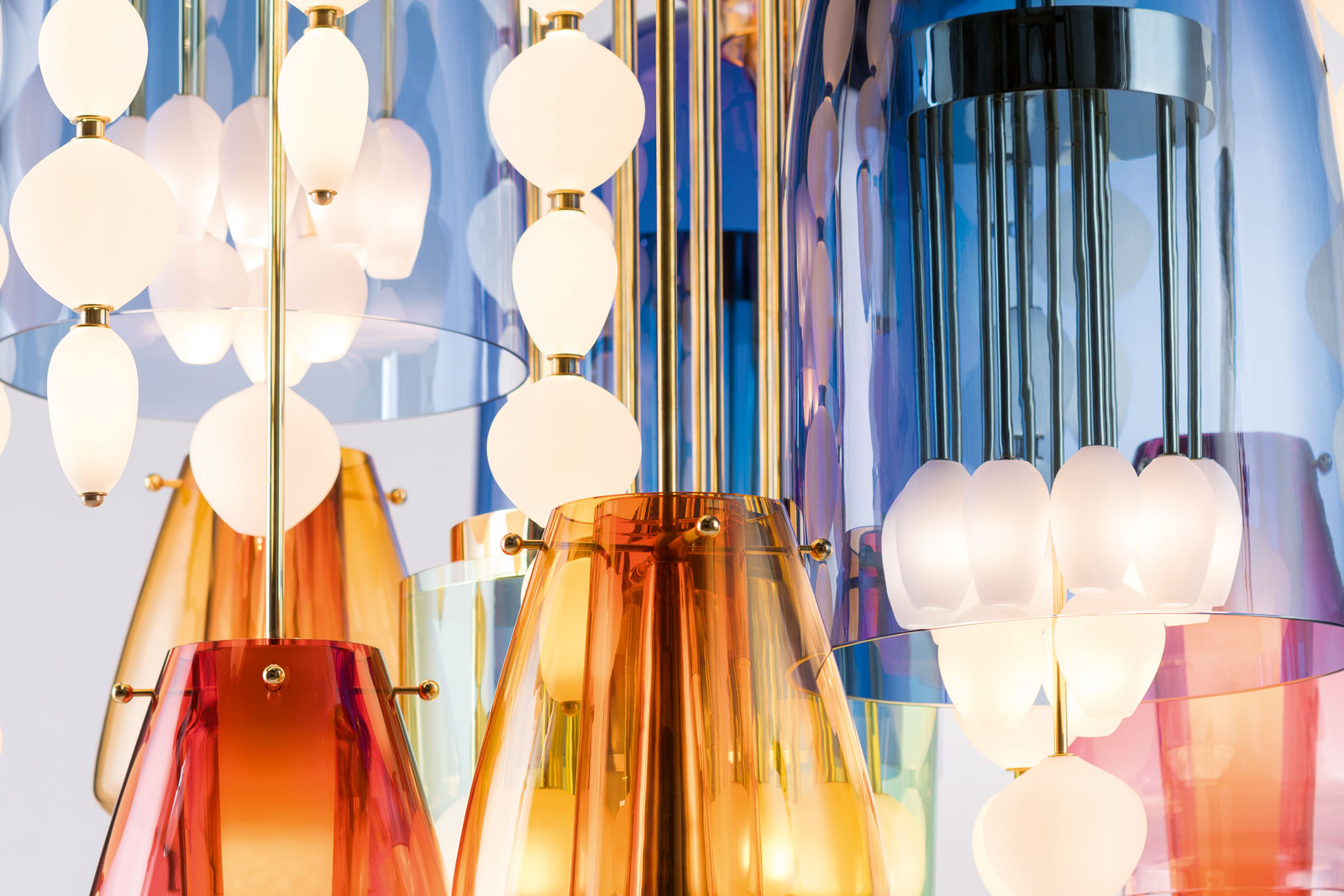
On a small table in the courtyard of a master glassmaker in Venice sits a large, opaque orb of hand-blown Murano glass, its glossy black surface glinting in the morning sunlight. It is quite beautiful. This, however, is not the end of its creative process, but just the beginning. A few moments later, designer Ini Archibong takes a white marker pen and sketches a series of freehand lines and circles over its curved shape. In so doing, he creates a rough plan for the next stage—many hours of meticulous hand engraving that transforms the orb from smooth and polished to textured and matte, the lines and circles, now etched, giving it a somber, otherworldly appearance.
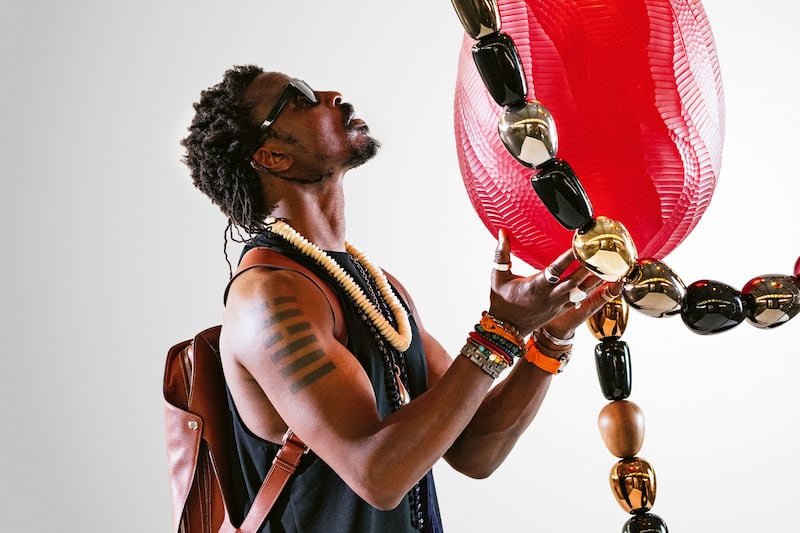
The orb is the centerpiece of Eno, a stunning chandelier designed by Archibong. It hangs both vertically and horizontally, the black orb surrounded by three amber-colored shades, also in Murano glass, that have been intricately engraved. Completing the chandelier are strings of giant beads made from ceramic, wood, and brass that weave between the glass vessels, reflecting the light that glows softly through them.
Eno provokes awe and wonder, just as Archibong intends. Over the past decade, he has garlanded a reputation for creating works that are visually stunning, but also speak to a deeper meaning. Born in the United States to Nigerian parents, his pieces explore mythology and spirituality, with the aim of creating a story that unites all displaced people, the “children of the diaspora.” Eno is his first piece to tap into his own heritage—the name means “gift” in Nigeria’s Ibibio language, and the chandelier represents three deities falling from the sky, bringing with them an important offering. Lighting, says Archibong, is particularly suited to his storytelling. “One of the things that’s special to me about lighting is the ability for expression, to express things that are kind of intangible, that make people feel emotion in a more direct way than, say, a chair, which is more about using than looking,” he explains. “I think light has this power because as humans, we’re highly affected by the quality of light that we’re bathed in or that is helping us to see.”
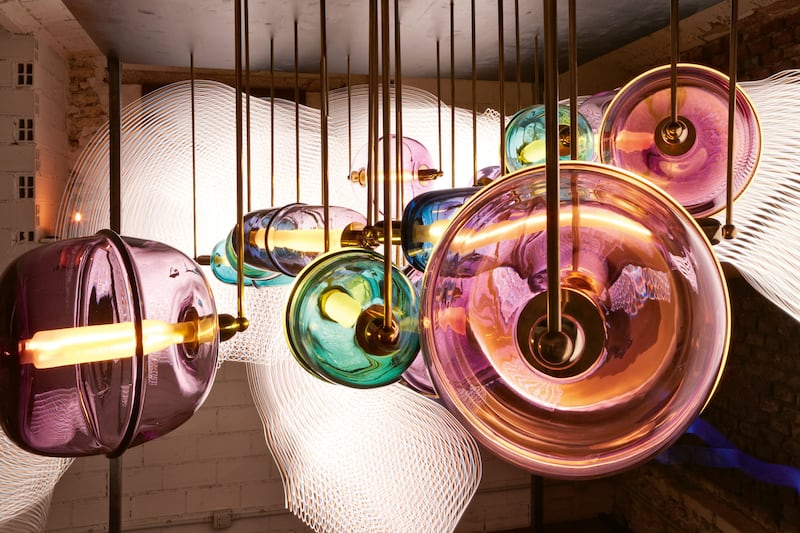
Flower power
Almost 4,000 miles (6,437 km) away, the 12-foot (3.7 m) Magnolia Grandiflora chandelier illuminates an enormous entranceway of New York City’s Park Avenue Armory, the hero piece of the annual Salon Art & Design. A recreation of a section of a flowering magnolia tree, its branches, in forged and patinated iron, twist and curl down from the ceiling, the statuesque blossoms reimagined as shades made from molded cotton. Like Eno, Magnolia Grandiflora evokes an emotional response in all those who see it.
“People tell us that our pieces fill them with joy,” says its co-designer, Christopher Cox, one half of Cox London, the studio he heads with his wife, Nicola. “I think it’s because they are so wild and unruly that they make you feel something. And also, unlike a table that anchors you, a light changes, and so how we engage with it does, too. Walk into the room during the day and it is silhouetted against a window; draw the curtains at night, and it looks different again.”
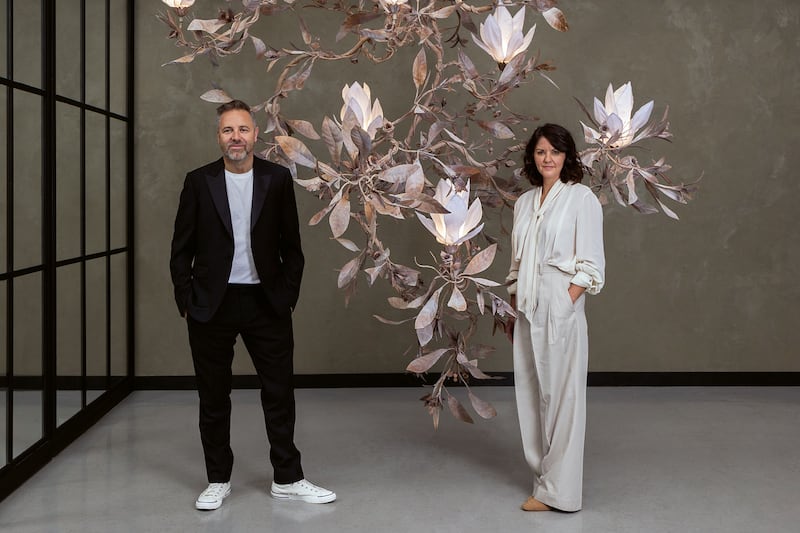
Although their work is quite contrasting, both Archibong and Cox London share a reputation for exceptional craftsmanship and for challenging the notion of what lighting can be. The result is pieces that are as much artwork or sculpture as they are functional lights, creating breathtaking focal points in a room.
“I think of the space up there as the last bastion of sculpture in a room, a place where you can do something really expressive,” explains Christopher.
Sculpting mostly in metal in their own foundry on the premises, and applying a variety of traditional finishes such as oxidized patina and hand-gilding, the Coxes imbue metal with a surprising softness to create captivating nature-inspired designs. Their first was the now much-admired Oak Tree chandelier, a twisting cacophony of oak leaves that took eight months to make. More recent is Polypore, with thousands of hand-pulled glass leaves woven onto a hand-forged framework, which was inspired by bracket fungus that the couple spied on the side of a stable door when vacationing in Wales.
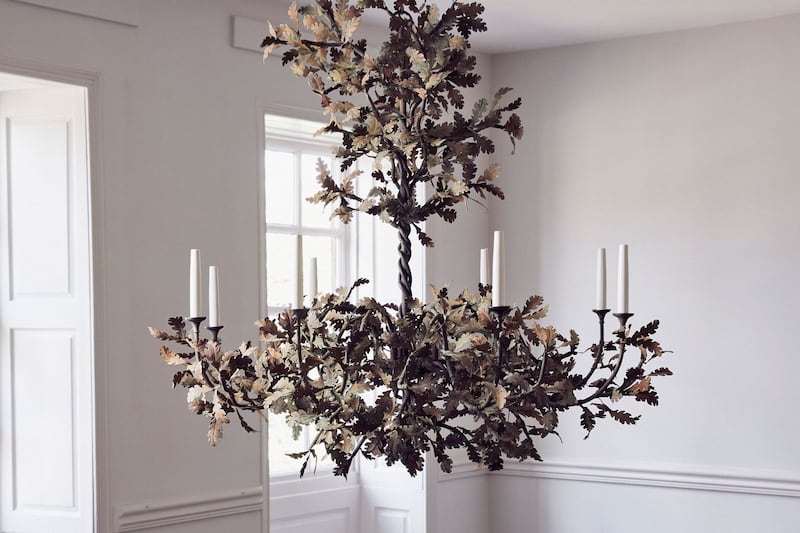
Perfect harmony
The Coxes met when studying fine art sculpture in London. Christopher, who comes from a long line of antique dealers, honed his craft through many years spent restoring antiques while Nicola molded and cast in a variety of materials. “Our work is a collision of craft, decorative arts and sculpture, fine art, and antiquity,” says Nicola. “Reverence of the past is really important, and we always put a veil of time over everything we do.” The couple work collaboratively, often taking ideas from each other’s drawings to create the final design. “I’m a massive Beatles fan, and it’s like Lennon and McCartney—one supplies the lyrics or the melody and the other the backing vocals, and together it comes alive,” says Christopher.
One celebrated design is Ferro Vitro, a chandelier inspired by line drawings by the 20th-century artist Alberto Giacometti. “Chris designed an architectural cage-like structure and I suggested punctuating the space with glass that could be lit up,” says Nicola. It took three years to perfect, with the differences in the cooling temperatures of metal and glass among the problems that needed solving.

Archibong, who trained as an industrial designer and who has collaborated with brands such as Hermès and Bernhardt Design, works predominantly in glass when it comes to lighting. “For me, it is such a special material because even if it’s not an element of a lamp or chandelier, a piece of glass in itself is a magical way of expressing light because it holds the light and it bends it. It allows for me to play with perception, playing with emotion, in a way that other materials can’t.”
Venetian vibes
Archibong’s most recent lighting designs are the result of a remarkable collaboration between him and a master glassmaker in Murano. In fact, this relationship has reshaped his design vernacular, taking it from, as he puts it, “precise and controlled” to something far more free-flowing. His previous collection, Hierophany, includes the Vernus chandelier that is now in the permanent collection of The Metropolitan Museum of Art in New York City. First designed using 3D modeling software, it was made of gradient colored glass shades in clean geometrical shapes. “My earlier work has a certain rigidity to it that is part of me, but there’s another part that is messy, that doesn’t work to a blueprint,” says Archibong. “It’s more like an arrangement of things that just happen, like picking up a musical instrument and playing it in a way that feels right, and then, when you’re done, realizing you made a nice song. The Murano way of working is similar—you drink prosecco at luncheon, then draw with chalk on the floor, and then just start making!”
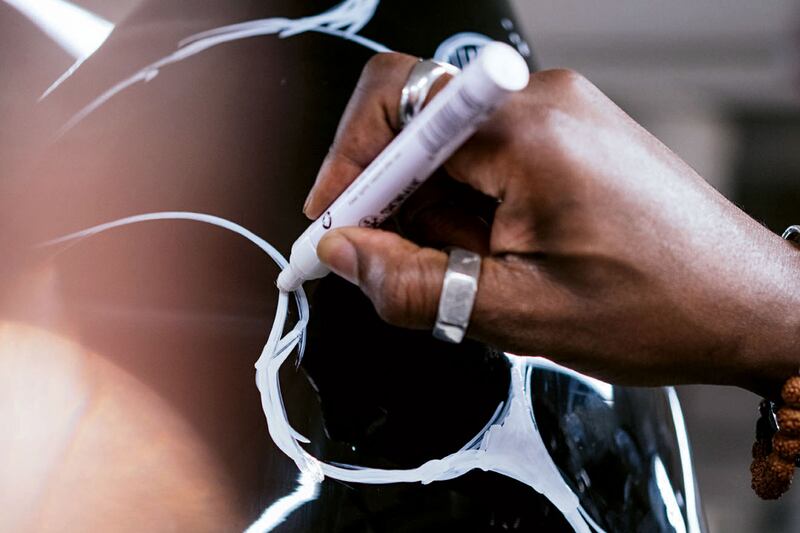
Time to glow
Both Cox London and Archibong recreate existing works to fit a client’s needs, but also accept bespoke commissions. A visit to the Cox London workshop finds the team working on brand-new pieces such as an 18-foot (5.5 m) bare-branch tree chandelier. Archibong’s most recent bespoke piece is Stairway to Heaven, a spectacular 22-foot-long (6.7 m) chandelier for the stairwell of a luxury Swiss chalet. In a similar style to Eno, with Murano glass orbs and loops of large beading, it rises from the basement disco through three stories to a top-floor spa. It tells of the journey from the “debauchery of last night’s party” in the basement to spiritual enlightenment on reaching the top floor, with the orbs’ colors changing correspondingly. The basement orb, for example, is black, while at the top floor, it is blue, representing the opening of the mind’s eye as you enter the spa.
However, for both Archibong and Cox London, impact does not have to mean going large. Archibong has created statement floor and table lamps and Cox London have translated their chandelier designs into delicate wall lights. “Just a branch of one of our chandeliers can transform a dull space into one that is delightful,” says Christopher. Archibong adds: “Consider a lamp in a small windowless cell—it is going to be the most emotionally impactful fitting. Tiny spaces and grand spaces each have potential for magnified impact, but differently. However it is used, light will always create real feeling.”
Writer’s bio: Rachel Loos writes for The Daily Telegraph and The Times, and is former editor of Elle Decoration UK


